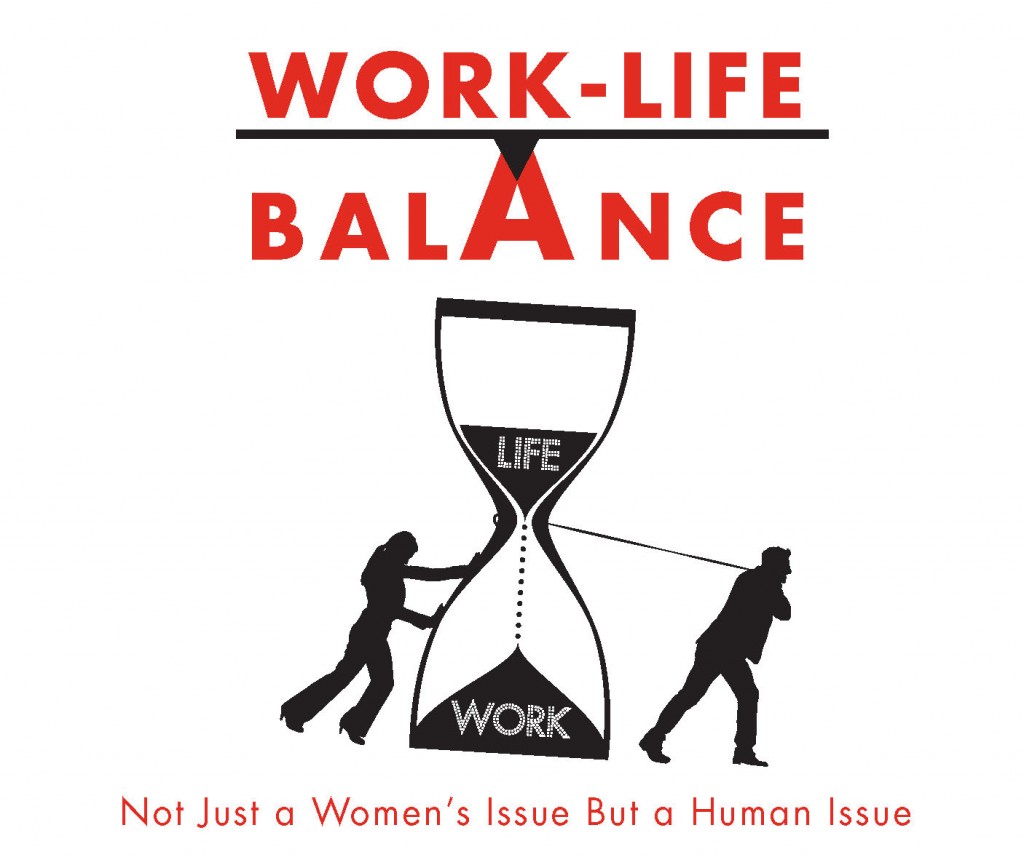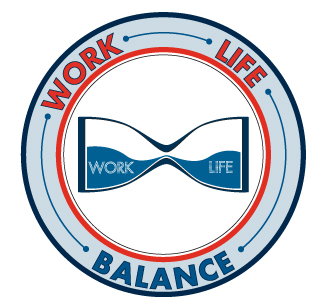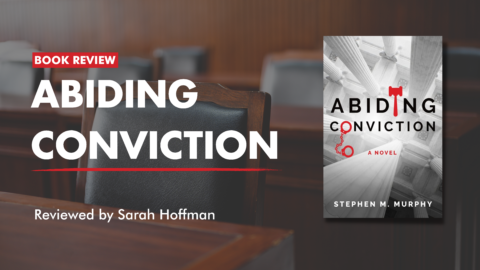
Between Marissa Mayer’s family unfriendly edict prohibiting telecommuting at Yahoo!, Sheryl Sandberg’s Lean In revolution, Anne-Marie Slaughter’s proclamation in The Atlantic that women can’t have it all, and a New Republic article titled “Sympathy for the Stay-at-Home Mom—An Argument about Work, Life, and the Modern Calendar” making the rounds on Facebook, work-life balance has been getting as much attention lately as marriage equality.
For lawyers on the ground, work-life balance takes many forms, and both women and men use a variety of tools to achieve it. Technology, it seems, is almost always key, as is having true partners both in law practice and in life. Many attorneys insist that work-life balance can only be achieved with supportive clients, the right firm environment (which may mean no firm at all), an amenable practice area, and a personal resolution to set boundaries.
These days, work-life balance is no longer just a women’s issue. Men—particularly in this generation, which focuses more on cooperative parenting than ever before—want choices too. A Pew Research Center report found that half of working fathers find it very or somewhat difficult to balance work and family life. That may be particularly true in the legal profession where “part time” usually adds up to a forty-hour week.
Work-life balance 2.0 is, therefore, a gender-neutral effort in which the lines between breadwinner and caregiver are blurred. And even attorneys who don’t have kids still want robust relationships outside of the law. Finding that balance is an intensely personal effort—what works for one lawyer may not work for another.
“Work-life balance means different things at different points in your career,” says Amy Todd-Gher, a new mom and a partner at Valdez Noor Todd & Doyle. “As a first-year associate at a big firm, it may mean taking time for yourself every day: doing yoga, going for a run, reading a nonlegal book for a half hour. It definitely becomes more intense once children come in.”
For Todd-Gher, maintaining work-life balance hinges on three things: “flexibility, working with people you trust, and choosing your life partner very, very carefully. If you have those things, you can achieve something akin to work-life balance.”
The ability to work from home now and then helps too, she adds. “It cuts down on commute time and I can have more time with my family.” Fortunately, at her firm, in-office “face time” is not required. “As long as your work is getting done, it doesn’t matter where you do it,” she explains. “You can work from home to wait for the cable guy, and sometimes the best way to crank out a brief is by working at home.”
In addition to her employment litigation practice and parenting, Todd-Gher serves as cochair of The Bar Association of San Francisco’s (BASF) LGBT subcommittee of the Equality Committee, and that, too, is part of her work-life balance. “It allows me to focus on something other than work, which brings a new perspective,” notes Todd-Gher, whose life partner works as a human rights attorney at Amnesty International.
Amidst her busy work schedule, Todd-Gher insists on getting home by six to give her baby a bottle and put her to bed. “I’ll be back at my computer later in the evening to finish client work,” she says. “And that routine will change in six months. Law firms should allow employees the autonomy to decide what’s best for them so long as they meet the requirements of the job, which for lawyers usually means billable hours and excellent work.”
For solo practitioner Leslie Acosta-Bhattacharya, a trusts and estates lawyer, working from home has been key. She’s got three kids (ages nine, six, and eighteen months) with her husband, a patent attorney. Still, work-life balance, Acosta-Bhattacharya says, is something she struggles with every day. “It’s about juggling and being flexible. I’ve got lots of calendars—school, work, kid activities—and even with those I still need to regroup with my husband.”
When Acosta-Bhattacharya had her first child, she worked eighty-hour weeks at KPMG. “Someone else was raising him,” she recalls. “After two or three years of that, I thought, ‘This isn’t right.’” For a time, she didn’t work at all, but “that wasn’t for me either,” explains Acosta-Bhattacharya, who chairs BASF’s Estate Planning, Probate, and Trust Section. “It’s not perfect, but if I work, contribute to the community, and raise my family, I feel whole. I don’t feel I’m getting burned out in one area or the other.”
One work-life balance tip that Acosta-Bhattacharya offers is intertwining business meetings with family vacations whenever possible, something she does at the behest of her husband, who has “always had work-life balance as a model.” Their family, for example, has made businesspleasure trips to India and Colombia. They also combine work with family at other times. On Saturdays, for instance, Acosta-Bhattacharya may take her kids to the park for an hour and then set them up to color at home while she goes through emails. “That way, everyone gets a little something.”
Sometimes law firms can promote work-life balance for their lawyers. Latham & Watkins, for example, was selected by Working Mother magazine as one of the best law firms for women (along with other Bay Area firms such as Cooley; Farella Braun + Martel; Hanson Bridgett; Littler Mendelson; Orrick, Herrington & Sutcliffe; and Pillsbury Winthrop Shaw Pittman). “Being an attorney can be a very challenging job. We want to make that manageable for associates so that this continues to be a great place to work,” explains Adrian Davis, the firm’s chief attorney development officer.
That effort includes the firm’s “huge investment in technology,” which allows attorneys more remote access and “24/7 global support,” Davis explains. “For better or worse, you don’t clock in and clock out as an attorney. Our work lives are not totally structured. We recognize that you have to balance work obligations with other parts of your life.”
Therefore, Latham tries “not to be rigid,” he adds. “We’re flexible with people’s circumstances, which are not necessarily continuous.” To that end, a few years ago the firm introduced its Pace Reduction Option for Returning Associates to Adjust (PRO-RATA) program, in which associates can work at a 75 or 80 percent pace for six months after a parental leave. PRO-RATA attorneys are assigned coordinators, who help them examine whether the choice is the right one. “It’s a collaborative process,” Davis explains. “We both have to be flexible.”
In certain practice areas, adaptable schedules are easier to maintain, according to Davis. But, he adds, “you can’t completely plan the nature of our work. If you’re a litigator, you may be in trial for three or four weeks. Transactional work has extreme periods too.”
But work-life balance remains a critical mission for the firm because it affects both morale and retention. “A law firm is made up of human capital: what we offer is the quality of our attorneys,” Davis explains.
“The firm must find ways to support people so they can be happier here and more engaged. Then they’ll be more likely to stay. Being a lawyer is a hard job with a real high level of commitment. Starting from that premise, it’s important to recognize that the entirety of one’s life is not about work.”
In addition to the PRO-RATA program, Latham carefully structures its office environments, which, Davis says, is “very important” to fostering a firm culture. For instance, when the San Francisco office was remodeled not long ago, enhancing the communal areas was a priority. “Latham is comprised not just of great people, but people who work together really well.”
Still, work-life balance “is never perfect,” notes Quyen Ta, a partner at Keker & Van Nest and parent of twin toddler sons with her husband, Demian Pay, who works as senior counsel at Chevron Corporation. Even though Ta and her husband both maintain full-time lawyer schedules, they’ve been able to make it work alongside parenting demands. (See profile on page 50.) “We’re supportive of each other’s careers,” she says. “There are nights when we have to be a good team.”
In addition to relying on both sets of nearby grandparents, Ta says she drew on advice she received even before having kids: “you can’t feel guilty about hiring help,” she recalls. “Our nanny helps manage my life. It’s essential.” Many of Ta’s male colleagues have caretaker responsibilities and she says it’s “refreshing” to see both parents involved.
“It’s an emerging trend,” Ta notes, which is why she doesn’t view work-life balance as simply a women’s issue. “Th e most successful arrangements have to involve both parents. With twins, even if I wanted to be primary caretaker, twins more than doubled the work and the chaos. My husband makes a lot of decisions with me and picks up a lot of slack. Parents have to negotiate.”
In addition to supportive partners, technology seems to enhance work-life balance—mostly. “It’s a mixed blessing,” Todd-Gher explains. “I can quickly answer questions no matter where I am, but it’s also hard to get away.” Th at’s also why having trustworthy colleagues is so important. “If you really want to take a vacation, clients have to know there’s someone in your offi ce they can talk to.” (Incidentally, having understanding clients helps too: when Todd-Gher took maternity leave, her clients were supportive even though it meant litigation was sometimes delayed.)
For Acosta-Bhattacharya, technology has made working from home possible. “I was nervous about how effi cient it is because I want to keep [work and home] separate,” she explains. But with mini iPads, iPads, and several laptops, she’s made it all work. “I rely heavily on Outlook reminders on my iPhone. If I lose my phone, I’m kind of lost.” No matter the means, most lawyers insist that achieving work-life balance is worth the effort. “We need balance so we can be better lawyers and [it’s] better for our families,” Todd-Gher notes. “If you work 24 hours a day, you’re out of whack, and any human will burn out. Americans are such a work-focused culture. It’s not just a women’s issue, it’s a human issue.”
This article was previously published in the San Francisco Attorney magazine. As a member of The Bar Association of San Francisco, you can log in here to read more articles from the current magazine issue.
About the author:
A former lawyer, Leslie A. Gordon is a freelance journalist living in San Francisco. She is the author of Cheer: A Novel, which is available on Amazon. She can be reached at leslie.gordon@stanfordalumni.org.






0 comments on “Work-Life Balance – Not Just a Women's Issue But a Human Issue”